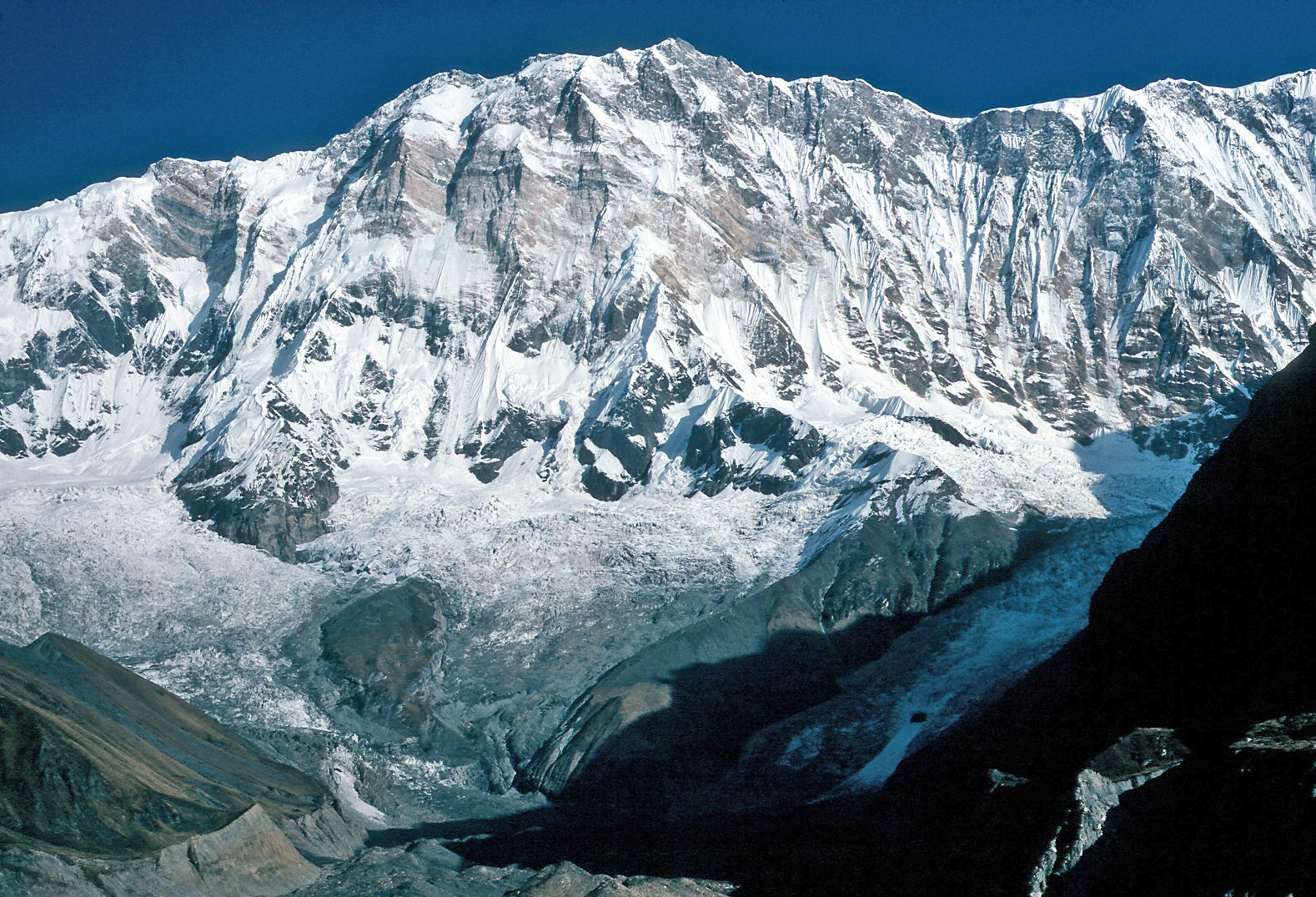 Thirty-nine years after its publication, I finally got around to reading Annapurna South Face by Sir Chris Bonington. The book is an account of the expedition Bonington led on the South Face of Annapurna in 1970.
Thirty-nine years after its publication, I finally got around to reading Annapurna South Face by Sir Chris Bonington. The book is an account of the expedition Bonington led on the South Face of Annapurna in 1970. At 8091 meters, the summit of Annapurna is the tenth highest in the world. Though Annapurna was the first 8000-meter peak to be climbed (by a French expedition in 1950), it is often considered to be the hardest. According to various websites, Annapurna is the least frequently climbed 8000-meter peak, but has the highest fatality rate: for every two climbers who have summitted, roughly one has died trying. It was also the last of the fourteen 8000-meter peaks that Ed Viesturs climbed, and it took him three expeditions before he reached its top.
On May 27, 1970, two members of Bonington's expedition – namely, Dougal Haston and Don Whillans – made it to the summit after roughly two months of hiking and climbing. They missed getting the second ascent of Annapurna by a matter of days. Their achievement was supported by the incredibly hard labor and commitment of dozens of other climbers and Sherpas. One merit of Bonington's book is its emphasis on the tremendous sacrifices others made to position Haston and Whillans for their summit bid.
It seems to me that major mountaineering expeditions are like human pyramids, in that the person on top is not necessarily the hardest working or most competent member. In the case of a human pyramid, the person on top deserves no more credit than anyone else. But for some reason, in mountaineering expeditions the persons who summit tend to get more credit and reap more rewards than anyone else. Think of Sir Edmund Hillary and Tenzing Norgay. Few people could name any other members of their expedition. Off the top of my head, I can only think of one – the leader of the expedition. One could argue that on many major mountaineering expeditions the supporting climbers deserve most of the credit, because the climbers who summit are already rewarded by getting to stand on the summit.
In addition to giving credit where credit is due, Bonington provides an unmistakable sense of the difficulty and complexity of a major mountaineering expedition. The book is actually a bit tedious in this regard, but after 100 pages of details about ferrying loads between high camps, one is unlikely to forget that element. One surprising and disappointing feature of the book, especially in light of how much attention is given to load-ferrying, is how little is devoted to the successful summit day. Seemingly out of the blue, after almost three hundred pages, Bonington announces that Haston and Whillans reached the summit and then defers to Haston's hurried account of what transpired from May 17-27. Bonington then concludes with a few pages about the descent to base camp, which included the death of the accomplished climber Ian Clough in an avalanche. Though Bonington devotes an almost negligible amount of text to summit day, he certainly cannot be faulted for giving excessive credit to the climbers who managed to summit.
The South Face of Annapurna (photo by Wolfgang Beyer, Wikipedia)
Ian Clough's death on Annapurna was not the only fatality on one of Bonington's expeditions. From 1975-1982, four more of Bonington's British teammates died on Himalayan expeditions he led – namely, Mick Burke, Nick Estcourt, Peter Boardman, and Joe Tasker. Clint Willis does an excellent job of chronicling these expeditions and their consequences in The Boys of Everest: Chris Bonington and the Tragedy of Climbing's Greatest Generation (2007, 560 pages). Reading that book made me wonder about the propriety of leading expeditions that repeatedly kill people, but I've reached no conclusions.
Considering that Bonington was 35 years old when he led the Annapurna expedition in 1970, it is amazing how active he still is at 75. This past September he climbed Mont Blanc. This May he will be participating in a 22-day trek in the Annapurna region of Nepal. The trek will serve as a 50-year anniversary of his first ascent of Annapurna II (7937 meters) in 1960. Think about that. Bonington climbed a major peak in the Himalayas fifty years ago and will be trekking back to it this year. If you cannot keep up with Sir Chris Bonington in the mountains, you can at least keep up with his personal website or Berghaus blog.


4 comments:
very informative post.
Annapurna Panorama Trek 10 Days
A good article with wonderful Explanation, Great Post.
Great share! Such a nice content, Thanks.
Thanks a lot for sharing so much. Thank you for this incredibly informative article.
Post a Comment